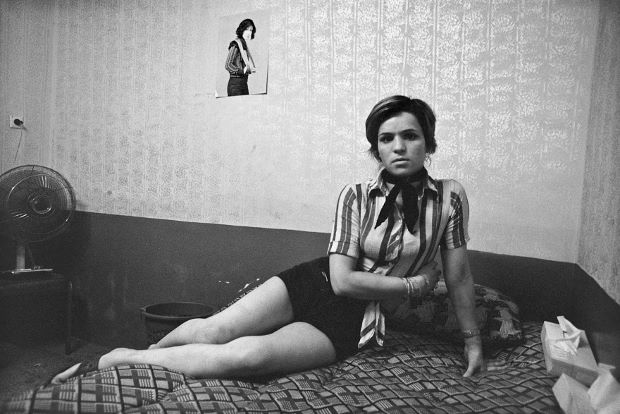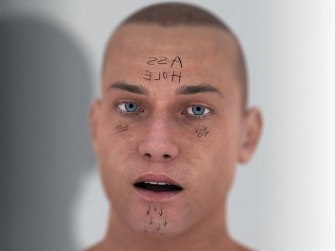 |
In Paris I am always curious to know what criteria
have been satisfied to earn an exhibition at one of the state museums. Why
would the French be interested in the censored and banned images from modern
Iran? The mystery is solved very shortly after entering Unedited History, as we learn that so many Iranian artists from the
post-1979 Revolution period came to France, and have indeed made their name
here. At least, a large number of those exhibited are now living and working in
France.
 |
| Kaveh Golestan, Prostitute Series, 1975-1977 Documentation accompanying exhibition |
Unedited
History starts tentatively with the paintings and
other arts of the pre-Revolutionary Shah’s Iran. I say tentatively because the works
were preoccupied with aesthetic issues, experimenting with form and style in a
search that brought together traditional and Western art forms. And then the
revolution happened. By the late-1970s, all the experimentation of the previous
two decades was left by the wayside, overwhelmed by an urgent and unprecedented
passion for change and the possibility of freedom in life and art. Among the
treasures on exhibition in Unedited
History was footage shot by Kamran Shirdel of the 1979 revolution as it
took place around him. Entitled here Memories
of Destruction: Rushes from the Revolution, we see, minute by minute, the
slow unfolding of events that changed the world. Two things struck me about
this rare footage: first, much of what we see is a dense crowd, walking. Motion
and protesting in Iran 1979 belong together. I don’t know what to make of it,
but I think of, for example, the Egyptian Revolution, and I think of Tahrir
Square packed to the rafters with protesters sitting, standing, protesting. And
I wondered why the walking in Iran? Was this related to the relative invisibility
of the Ayatollah in the leadup to the overthrow of the Shah? That is, with no
leader to look at physically, the people were left to walk in search of
freedom? Second, I was struck by the separation of men and women in the
footage. Of course, they were separated, even in revolution, but nevertheless,
it’s a surprise to see the adherence to religion in the midst of revolution.
Even when this revolution is in the name of Islamic Law. In confirmation of
what I suspected was Shirdel’s extremely rare footage, a google search turned
up no reference to the film. Just to see this footage is reason enough to go visit
this exhibition.
 |
| Kaveh Golestan, Citadel, 1975-1977 |
Also really powerful were Kaveh Golestan’s
photographs taken in the redlight district of Shahr-e No, otherwise known as
the Citadel, in Tehran, 1975-77. The area was erased in the 1979 revolution, and
again, I found myself amazed at the awkwardness of gender relations. It wasn’t
just the presence of prostitutes in the Muslim-Arab world, but the presence of
the male photographer inside that world that left me amazed by the images. And
it was a sparse, sad, cold world. Often with a single image on the wall, a threadbare
cover on the bed or its equivalent, years of grime on the walls, there’s
nothing glorified about sex in these photographs.
 |
| Tahmineh Monzavi, Ateliers de Confection de Robes de Mariée Quartier de Mokhberodeleh, Teheran, 2007-2011 |
 |
| Narmine Sadeg, Office of Investigation into Diverted Trajectories, 2014 |
 |
| Chohreh Feydjou exhibition view Unedited history: Iran 1960-2014 |
In the final rooms, the powerful work of Chohreh Feyzdjou and Narmine Sadeg bring the
concerns of Iran, its devastated history, and the same but different
melancholia we saw in the photographs, to the West. Both artists digress from
the documentary photographic and filmic form that became the chosen media for
the representation of revolutionary and post-revolutionary Iranian life and
politics. Their deeply sensual and tactile sculptures exude the pain and death
and dislocation of being in exile, coming from a country that has suffered
everything. Feyzdjou’s boxes, cabinets, racks and shelves filled with decaying,
burnt and wasted objects, all meticulously labelled, remind us of the
impossibility of holding onto anything. And through the archival collection and
cataloguing of now useless objects, bottles and papers, we are left in no doubt
as to the futility of trying to retain what will always disappear.




















